My teenage years were spent in Eastbourne, growing up in the shadow of the Downs, swimming from the beach and hanging out in the various hostelries of the town. Now that I’ve returned to live here I’m rediscovering the charms of the town and its surrounds.
One thing has surprised me – how ignorant I was about the history of the place. I knew its geography and topography well, thanks to doing A Level Geography and the Duke of Edinburgh’s Award, which caused my friends and me to tramp all over the Downs. But despite doing A Level History, I knew little about the history of the town itself and have only now discovered the significance of its role in WW2. I suppose in the seventies it was still a bit too close to the end of the war and people didn’t show a lot of interest (especially teenage girls).

Messerschmitt Bf 110 – Bjorn Huber, own work via Wikimedia Commons
Seven hundred bombs plus a good few flying bombs fell on the town – many of them dumped by the Luftwaffe after bombing raids on London before the return trip over the channel. Between 1942 and 43 it was a favourite target of “hit and run” raiders and was the most bombed town of the South coast. The town hosted thousands of Canadian soldiers from various regiments between 1941 and 1944. Around one hundred and fifty Eastbourne women were swept off their feet and sailed to Canada as war brides.
The first German aircraft to be shot down over the town was a Messerschmitt, which was escorting Luftwaffe bombers heading to attack RAF airfields around London, including Heathrow. As this plane flew over the Downs, it was engaged in a dog fight by a Hurricane and broke up in mid air – the pilot, whose parachute didn’t open, was killed when he landed on the roof of a local school. The rear gunner landed in the sea and drowned.
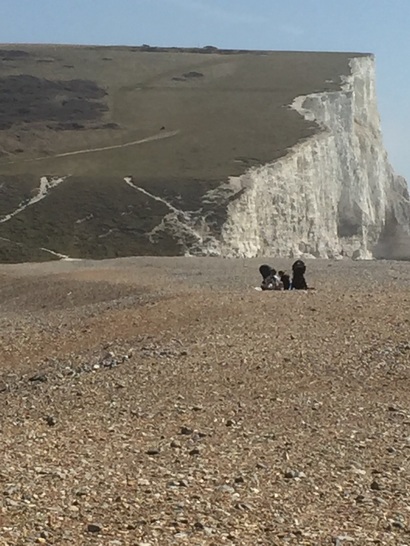
The Seven Sisters from Cuckmere Haven
Today I’ve been to visit another nearby place of great wartime significance, the walk from Exceat to Cuckmere Haven. Back in the day, my geography lessons ensured I was well aware of the meanders and ox-bow lakes and the problems of coastal erosion, but I was ignorant of the importance of the Cuckmere valley in defending the country against invasion. This beautiful valley meets the sea next to the chalk cliffs of the Seven Sisters. In June 1940 work began to construct coastal defences against German invasion.
Before 1940 the Luftwaffe had conducted extensive surveys of the valley and it was a designated landing beach for the German 9th Army in the planned invasion of Operation Sea Lion, which never happened, as Hitler lost the Battle of Britain and turned his sights on Russia instead. That didn’t mean that the area didn’t see any action though – a U-boat shelled Exceat in 1940 and the whole area was under air attack many times. There is still much evidence of the strategic defence system today, although many of the children enjoying the Easter holidays there today may well be as oblivious as I was. Because the invasion never happened it’s hard to imagine that it ever could have done, until you see places like this and realise how it must have seemed a terrifying inevitability at the time.
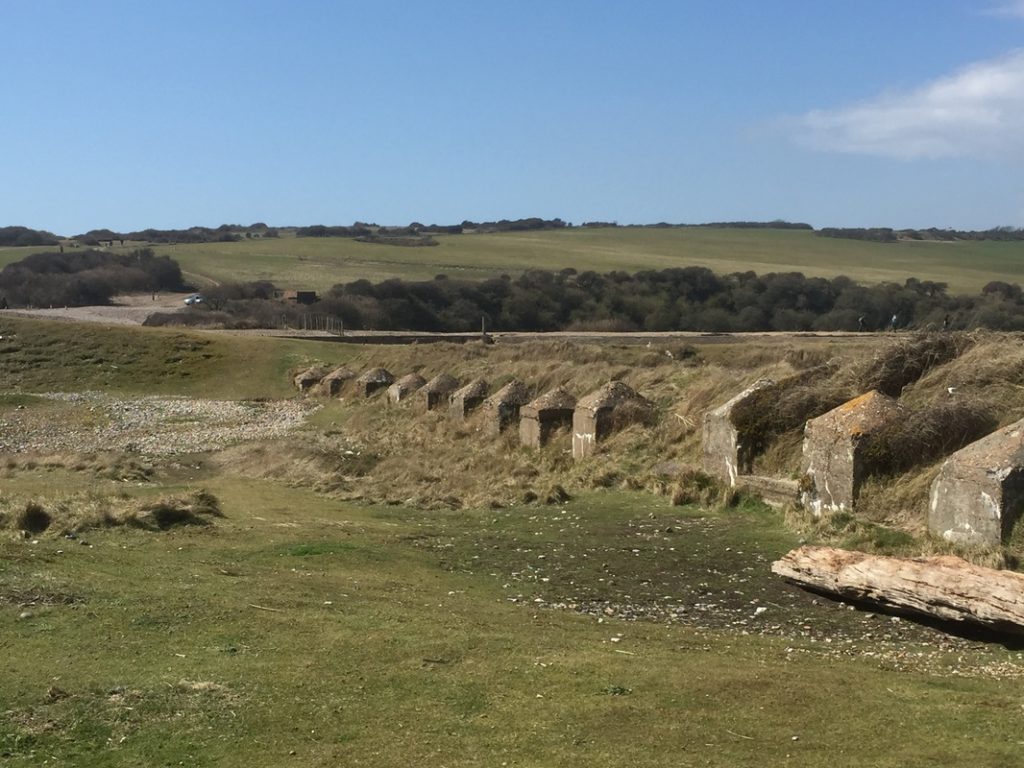
Dragon’s Teeth Tank Traps
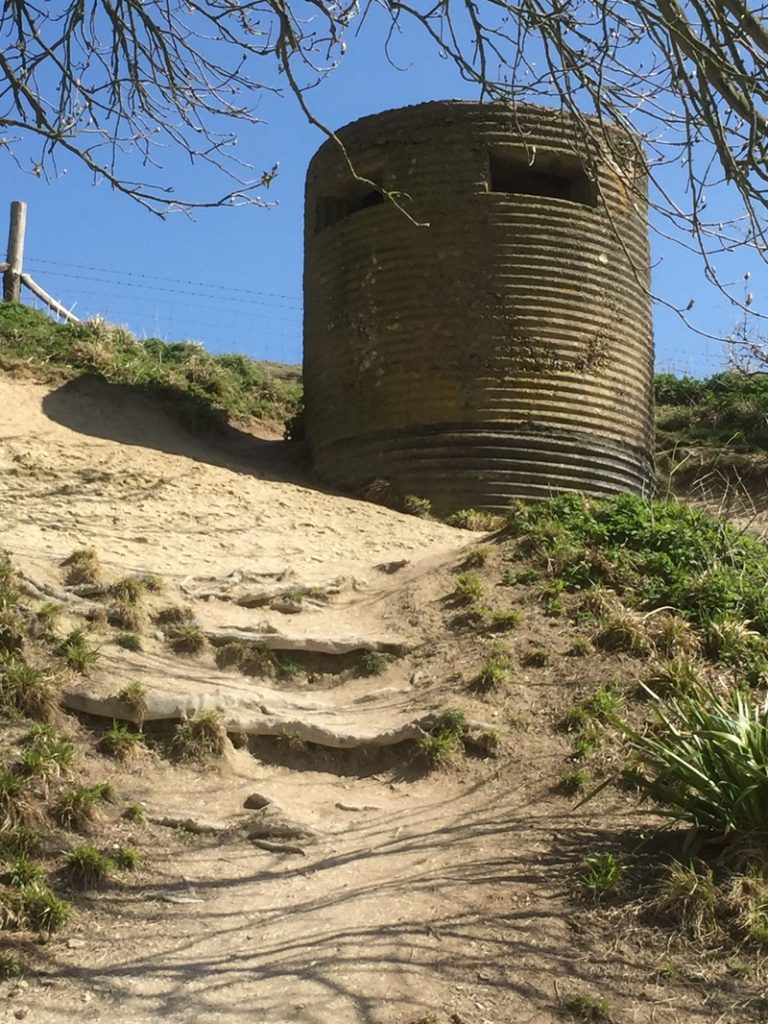
Type 2 pillbox – 3 or 4 gunners would have been inside
The defences included a large number of pillboxes and concrete dragons’ teeth tank traps. The topography of the valley was also used to advantage, with the anti-tank obstacles behind the sea banks and the various creeks and tributaries adding to the barriers for tanks. The Cuckmere River was also very heavily mined. One other ingenious element was the creation of decoy lights set out in the pattern of the lights of nearby Newhaven, with the aim of tricking the German airmen into turning inland too soon and protecting the strategically important port.
The pillboxes and concealed artillery batteries were operated by various regular army regiments plus the redoubtable Home Guard. Once the threat of invasion was passed, Cuckmere Haven was the site of coastal defence and artillery training, including by the Canadian army. After D Day it was the departure point for cross channel communication cables, which had been cut at the start of the war.
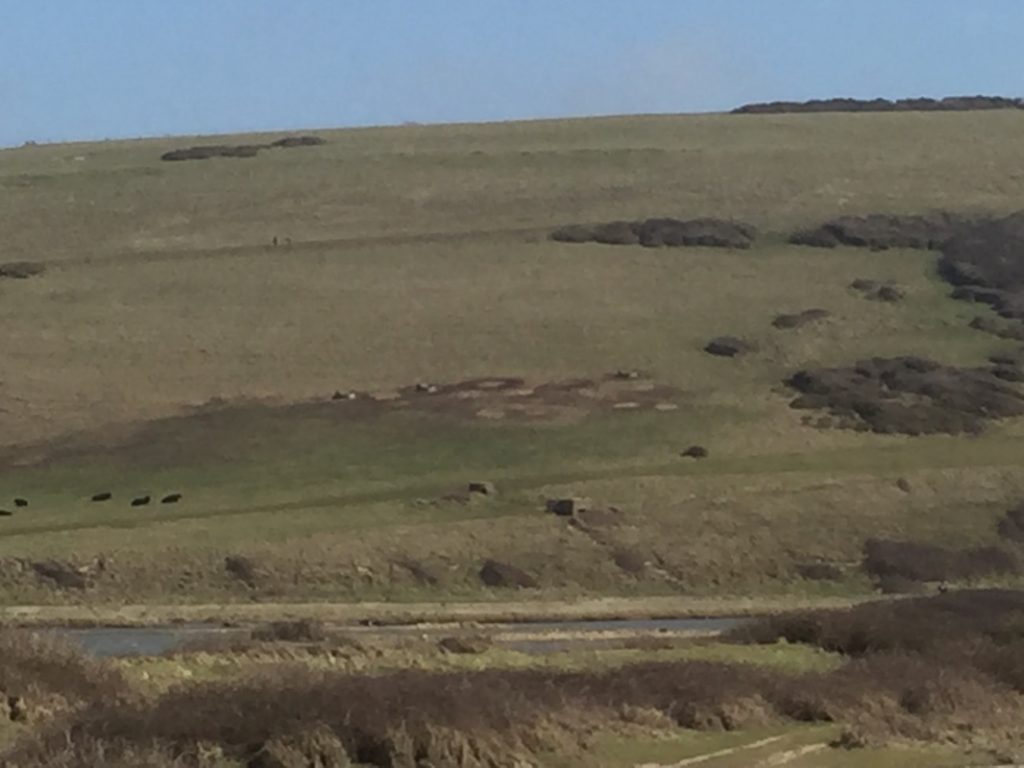
Pillboxes visible on the eastern side of the Cuckmere
Walking this beautiful walk down to the sea, it’s hard to imagine what it must have been like when under the threat of imminent invasion. The whole of the shingle beach would have been covered with barbed wire and wire scaffolding. Mines were everywhere. Although Sea Lion never took place, several men lost their lives on this beach laying mines and straying into the danger zone. For which I must today be very thankful as I enjoy the countryside, the egrets and Canada geese and the beautiful coastline.
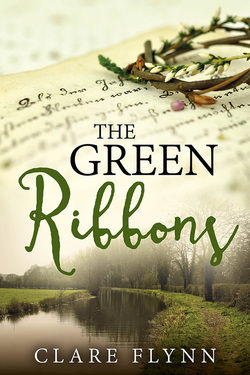 Clare’s latest novel, The Green Ribbons, will be published later this month.
Clare’s latest novel, The Green Ribbons, will be published later this month.
To be alerted to special offers and the release of new books please sign up here. You’ll receive a free short story based on my great great grandparents’ visit to The Great Exhibition in 1851 – it’s not available anywhere else.


0 Comments